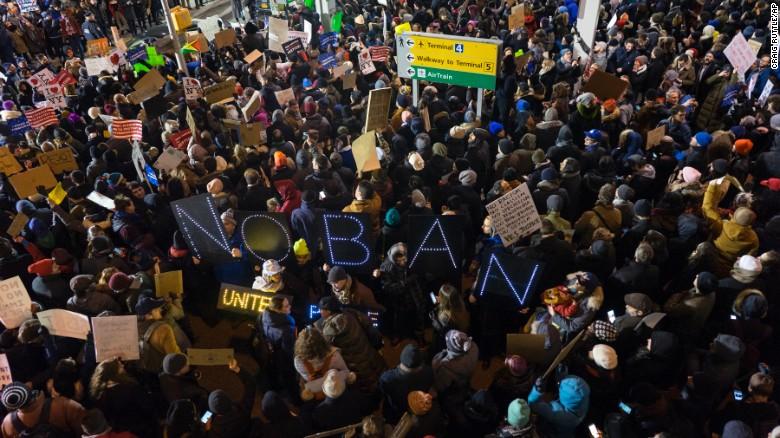Controversy Surrounding Donald Trump’s Executive Order on Travel
True to his campaign promise to increase regulations on immigration, Donald Trump signed an executive order on January 27 that would halt travel from seven majority-Muslim countries (Yemen, Sudan, Somalia, Libya, Iran, Syria and Iraq) for 90 days. In addition, the order also stated that all refugees would be barred from entering the country for 120 days and those from Syria will be indefinitely barred.
The following day, the Trump administration and all of Washington appeared to be in complete disarray as issues surrounding the so-called “travel ban” began to emerge. People across the nation organized at airports in order to protest. According to The New York Times, General John F. Kelly, the secretary of Homeland Security, said the White House did not seek legal review from Homeland Security. The White House failed to communicate with the Justice Department and Homeland Security on how to specifically carry out the executive order. Unfortunately, because of this lack of communication between different branches of the government, there were people detained at airports like Hameed Darweesh, an Iraqi national who worked as a translator for the United States Military, and officials were uncertain of what they were supposed to do. Furthermore, in response to the ban, judges in New York and Massachusetts blocked part of the order.
Even amid the chaos, President Trump defended the order, maintaining that it would protect the United States from terrorists who wanted to enter the country, something that has been refuted numerous times by terrorism experts.
On February 3, James Robart, a United States District Court Judge, blocked the executive order nationwide. The White House attempted to appeal the decision, but this request was denied and eventually the Ninth Circuit Court of Appeals ruled against resuming the travel ban.
Following the controversy surrounding his initial executive order, President Trump announced on February 16 that his administration will issue a new executive order on immigration in an upcoming week. The federal appeals court has made an agreement with the Justice Department to halt any legal proceedings until this new order is issued. Trump’s comments during the news conference indicated that his administration plans to postpone any attempts to reinstate the initial travel ban. Instead, the White House will issue a new order that will potentially discard the judge’s previous unease.
Numerous legal officials are in agreement that Trump’s former travel ban is unconstitutional, with Washington state and Minnesota both suing the administration. This past week, a Virginia federal judge articulated that the ban was motivated not by concerns over national security, but rather religious discrimination against Muslims. The issue has largely centered around whether or not the ban is legal, but many judges have now considered if the ban is truly a necessary and immediate measure of national security.
The current question, therefore, is how President Trump will craft the new executive order. Whether or not legal proceedings continue after the creation of the revised order depends on how much it differs from the previous ban. Trump has hinted that the new order may include new vetting procedures for travelers arriving from foreign areas. Others speculate that the rewritten order will no longer pertain to green-card holders, while some believe it could impact only those who have yet to apply for a visa.
While the Trump administration is confident that the new executive order will eliminate any constitutional concerns, the three-judge panel with the U.S. Court of Appeals for the 9th Circuit maintains that the revisions do not guarantee an end to the suspension of the travel ban. This legal controversy continues to be one of the many developing issues surrounding the Trump administration’s first few weeks in office.





